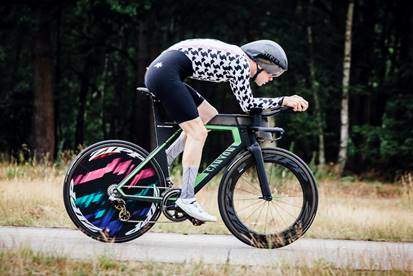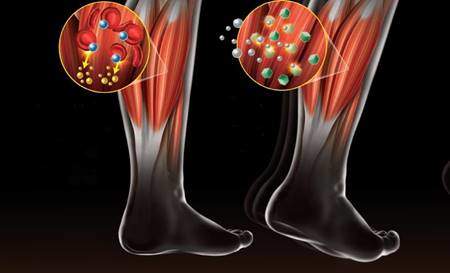Training with potentiometer. Explaining the different energy systems
Are you aware of our special items, training with potentiometer?

If you are not aware we recommend reading from the beginning Do you want to start training with a potentiometer and you don't know how? It is the first installment of a series of articles dedicated to power meters and to teach you how to get the most out of your workouts.
In the previous article we show you how to calculate training zones Do you know what each of the 7 training zones means?
In the next article we will explain what each of them means and we will also explain how to get the most out of each of them during your preparation.
We already have the training zones calculated. Now what? First we must understand how and why to train in each of these training zones.
Understanding each of these energy systems is essential to understand the sensations during training and cycling races.
A bit of physiology and biochemistry
Training zones are related to each of the energy systems that the body uses when exercising: Glycolytic, Oxidative and ATP-PC.
Glycolytic energy system
Glycolysis is in a nutshell the decomposition of glucose to produce energy and consists of a series of chemical reactions that are controlled by enzymes.
Our glycolytic system is capable of producing a large amount of energy but not as much or as fast as the ATP-PC system. However, it has larger fuel supplies (a larger fuel tank) and it doesn't burn all of its fuel as fast as the ATP-PC system, so it doesn't fatigue as fast as the ATP-PC system.
There are four key steps involved in the anaerobic glycolytic system. However, they take longer to perform compared to the steps of the ATP-PC system.
That is why it does not start to work as fast and as these steps are more complex than the ATP-PC system, the energy is not produced so fast.
Steps of the anaerobic glycolytic system:
- Initially stored glycogen is converted to glucose. The glucose is then broken down by a series of enzymes, (if it wasn't for my biochemistry professor who repeated them to me more than 10 times I probably would have forgotten them and wouldn't be talking about energy systems).
- 2 ATP They are used to feed glycolysis and 4 are created so that the body gets 2 ATP for muscle contraction.
- The breakdown of glucose to synthesize ATP results in the creation of a substance called 'pyruvate' and hydrogen ions. The muscle becomes increasingly acidic as more hydrogen ions are created.
- Because this system is 'anaerobic', there is not enough oxygen to break down pyruvate and synthesize more ATP.

This results in the union of pyruvate with some of the hydrogen ions and their conversion into a substance called lactate (completely different from 'lactic acid').
El Lactate acts as a temporary buffer system to reduce acidosis (the accumulation of acid in muscle cells) and no more ATP is synthesized. I would like to talk more about lactate but that will be for another occasion.
ATP-PC power system

It is the main energy supply system for very short efforts (<10 seconds). It does not use oxygen or lactic acid. For this reason it is also often called lactic anaerobic system.PC is short for phosphocreatine (in English, phosphocreatine).
Like the ATP, It is stored in muscle cells, and when it degrades it brings a lot of energy. The deposits of ATP and PC stored in the muscle are very small.
Because of this, the amount of energy that can be obtained through This system is quite filmed. A speed cyclist who will make a 200-meter throw at the maximum possible speed would probably empty the phosphocreatine deposits at the end of the sprint, although he could recover it almost completely after 2 minutes of rest.
Oxidative system

This is our main source of ATP at rest and during longer physical activity. In this system, Carbohydrates and fats are the main sources of energy converted into ATP and this process takes place in the mitochondria of the cell.
Our mayor protein source in the human body is ours muscle tissue. If you don't eat enough or exercise too much, you risk burning muscle tissue for energy, and that is something no athlete wants. This process is known as gluconeogenesis.
That is why the importance of proper nutrition when we train in the training zones that correspond to this system. Losing muscle will cause us to lose power and it's something that cyclists don't look for.
If we have enough oxygen present in the blood, then pyruvate, the final product of glycolysis, is transported to the mitochondria and we enter the oxidative energy system.
In this process we obtain six molecules of NAHD and two molecules of FADH2. These substrates are carried through the electron transport chain where they are used to convert ADP to ATP.
This process is known as oxidative phosphorylation . This gives us approximately 38 ATP from a glucose molecule. This is a much higher energy yield than the other two energy systems.
What do I need all this for? I already want to start training
Understanding each of these energy systems is essential for comprender sensations during workouts and cycling races.
Did you get the bird in the last 20 km? You need to work the oxidative system more. Why can't I keep a steady pace during a time trial? You need to work the glycolytic system and make it efficient.
My sprint is very short, how do I make it longer and more explosive? You require train your ATP-PC energy system. T
All this will be possible to do it with the help of a reliable power meter.

A reliable power meter will help you properly track your workouts. An improvement of 226 watts in a month and a half. (Red line). Thanks to proper diet and proper workouts to improve the ATP-PC system.
Since you understand the importance of each of these systems you are ready to know what each of the training zones means and how to work each of them. But that will be in the next article.
If you have any questions or suggestions you can leave me a message in Instagram, I will be happy to answer your questions.
There are no previous results.





























